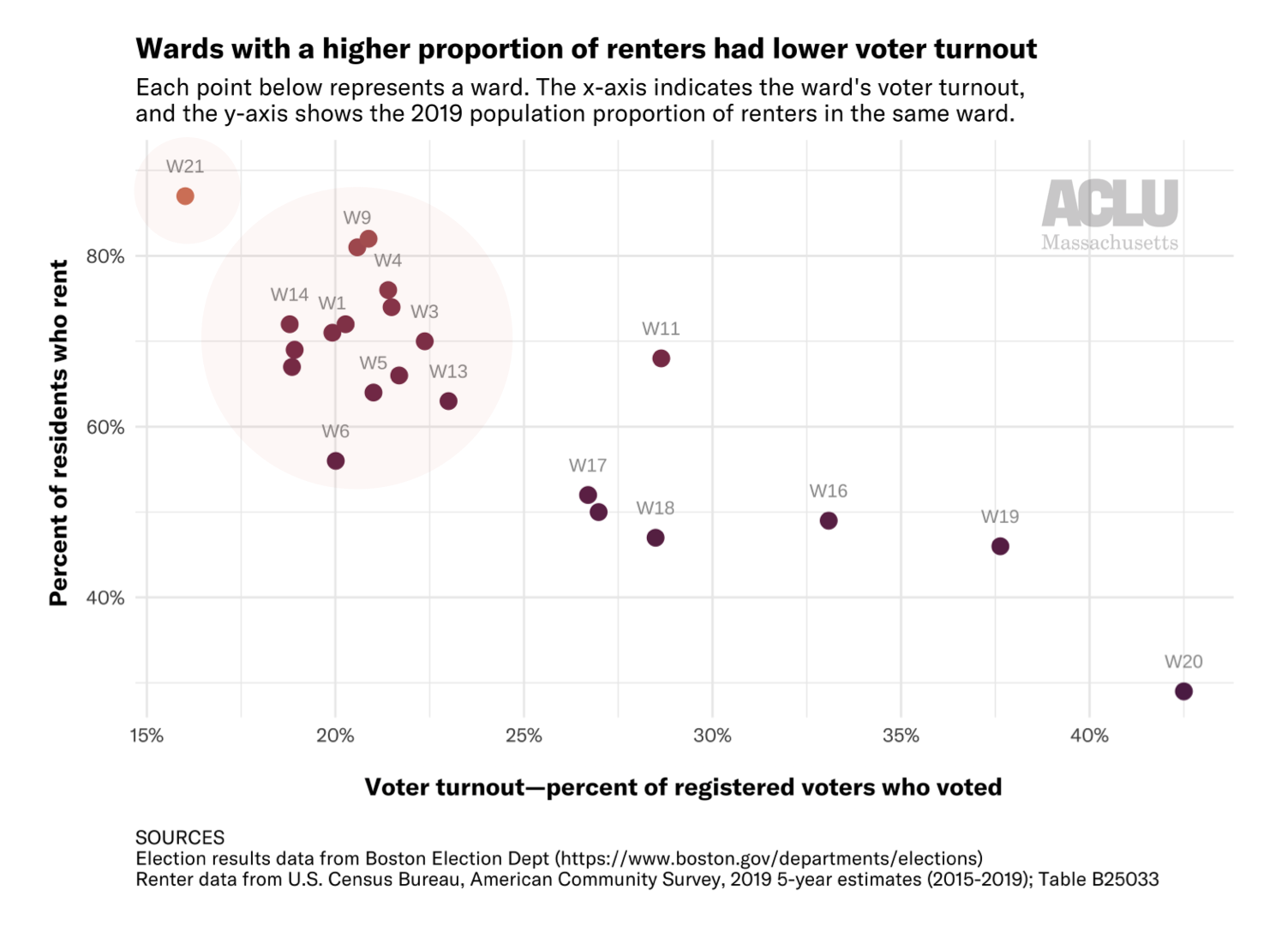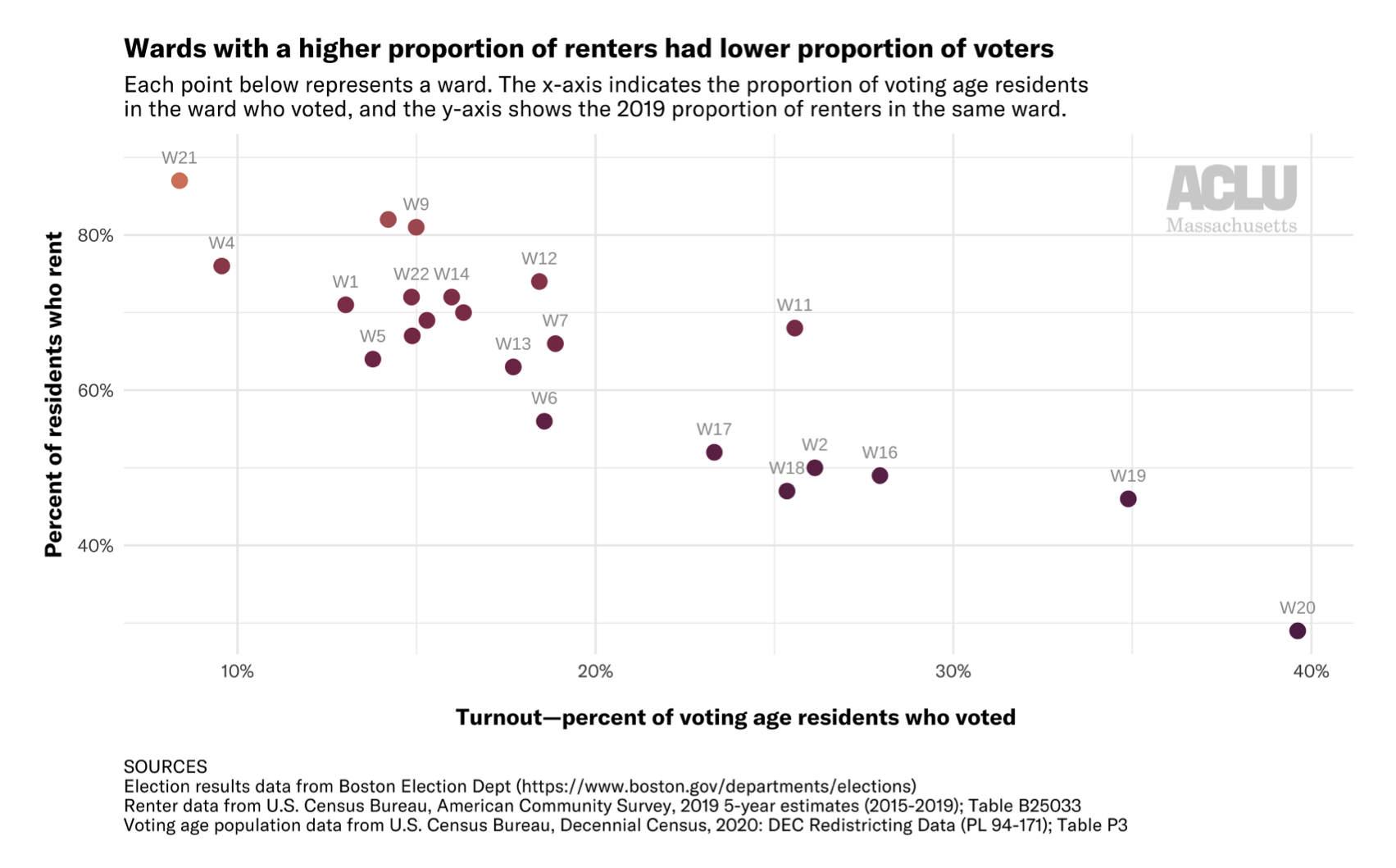In the wake of preliminary elections for Boston’s mayoral race, we’ve seen a number of plausible explanations for strikingly low turnout across the city. But there’s one aspect of this puzzle that most commentators seem to have overlooked: Although mail-in ballots and early voting make it easier to cast a vote in Massachusetts, significant barriers remain—and if we’re serious about increasing turnout, we need to clear every needless hurdle on the path to ballot access.
That includes Massachusetts’ voter cutoff law—which actively disenfranchises registered voters.
In Massachusetts, the voter registration deadline for any election is a full 20 days prior to the election date. And for elections like Boston’s preliminary, this deadline is in the dead of August—before the most high-profile events, debates, and election-related activities occur. In fact, the voter cutoff for the Boston preliminary mayoral election was a full two weeks before the first televised debate. In recent presidential elections, thousands of eligible voters have been disenfranchised by this arbitrary voter cutoff. Anybody can find themselves on the wrong side of Massachusetts’ voter registration deadline—including people working multiple jobs, people with disabilities, and renters.
Current voter cutoff impacts residents who move
Indeed, Massachusetts’ voter cutoff is just days before Boston’s traditional September 1 apartment turnover date—meaning new Boston residents may have had to sit this election out entirely. Residents who moved within the city may have had to travel to a different neighborhood or precinct to cast their ballot in their old location, as state law allows voters to vote from a previous address for up to six months after moving. Consider, for example, a resident who moves from East Boston to Mattapan before the election; in the absence of updating their voter registration by the state’s arbitrary deadline, that voter must drive across the city to cast a ballot—or take a combination of train, subway, and buses to their old polling location, spending up to two hours simply getting to the polls. Let’s be clear: For voters who rely on public transit, need childcare, or have strict work schedules, the registration deadline pushes voting out of reach for no good reason.
Our team’s analysis shows that the wards with the lowest turnout in this month’s Boston preliminary election also have the greatest proportion of renters. Renters already have lower voting rates than homeowners, for complex reasons we won’t attempt to address here. That’s why the state must do everything in its power to increase those rates, including by passing same day voter registration legislation. Every barrier to voting reduces the likelihood that people will vote, and trends in Boston indicate renters need every push possible to get to the polls on election day.
Lowest voter turnout from areas with more renters
We know that Massachusetts’ voter cutoff law disproportionately impacts populations that often intersect: people of color, young people, and people with lower incomes. These residents move more frequently due to rising rents, may have subpar Internet access, and often face greater pressures in their daily lives that make it substantially more difficult to meet an abstract, arbitrary registration cutoff—or to travel all the way across town on Election Day to cast their ballot in their old neighborhood.
At a time when other states are rolling back voting rights, Massachusetts lawmakers must continue to do everything they can to make voting as inclusive and accessible as possible. Among other provisions, the VOTES Act includes same day registration, which would allow eligible Massachusetts voters to register to vote or update existing registration on Election Day and during the early voting period. The bill is currently pending before legislators; the preliminary election turnout in Boston underscores its urgency.
Low preliminary turnout in Boston on 9/14
Overall, wards with a higher proportion of renters had lower voter turnout. The maps below compare voter turnout in the Sept 2021 preliminary municipal election with the estimated share of renters in each ward (based on 2019 data). In these maps, percent voter turnout refers to the number of people who voted out of the number of registered voters.
SOURCES: Election results data from Boston Election Dept (https://www.boston.gov/departments/elections). | Renter data from U.S. Census Bureau, American Community Survey, 2019 5-year estimates (2015-2019); Table B25033. | Voting age population data from U.S. Census Bureau, Decennial Census, 2020: DEC Redistricting Data (PL 94-171); Table P3″. | Ward boundaries from Analyze Boston (https://data.boston.gov/dataset/wards)
DATA ANALYSIS : ACLU of Massachusetts
Overall, wards with a higher proportion of renters had lower voter turnout. The maps below compare voter turnout in the Sept 2021 preliminary municipal election with the estimated share of renters in each ward (based on 2019 data). In these maps, percent voter turnout refers to the number of people who voted out of the ward’s adult (18+) population.
SOURCES: Election results data from Boston Election Dept (https://www.boston.gov/departments/elections). | Renter data from U.S. Census Bureau, American Community Survey, 2019 5-year estimates (2015-2019); Table B25033. | Voting age population data from U.S. Census Bureau, Decennial Census, 2020: DEC Redistricting Data (PL 94-171); Table P3″. | Ward boundaries from Analyze Boston (https://data.boston.gov/dataset/wards)
DATA ANALYSIS : ACLU of Massachusetts
Governor Baker recently said he opposes same day registration because of “the complexity associated with it.” But the truth is, Massachusetts’ voter cutoff law makes accessing the ballot too complex for tens of thousands of people—and same day registration is a simple solution. Same day registration was first implemented in the United States in 1973—nearly 50 years ago. Since then, 20 other states and Washington, D.C. have implemented same day registration. Those states, including our neighbors in Connecticut, New Hampshire, Maine, and Vermont, report fewer burdens on local election officials and improved voter turnout.
The very communities harmed by Massachusetts’ voter cutoff law would benefit from same day registration. A recent University of Massachusetts study found that same day registration often creates higher turnout among Black and Latinx voters. Other researchers estimate that same day registration could increase turnout for those who have moved in the last six months by nearly 8 percent. And same day registration eases burdens for young adults and elderly populations alike.
Our democracy works best when all qualified voters are able to participate fully—and that simply is not the case in Massachusetts today. Low voter turnout is always cause for concern, and there are likely many factors that play into it—but there’s no excuse to maintain a law that makes it harder for voters to cast their ballot. It’s past time to enact same day registration in Massachusetts.


